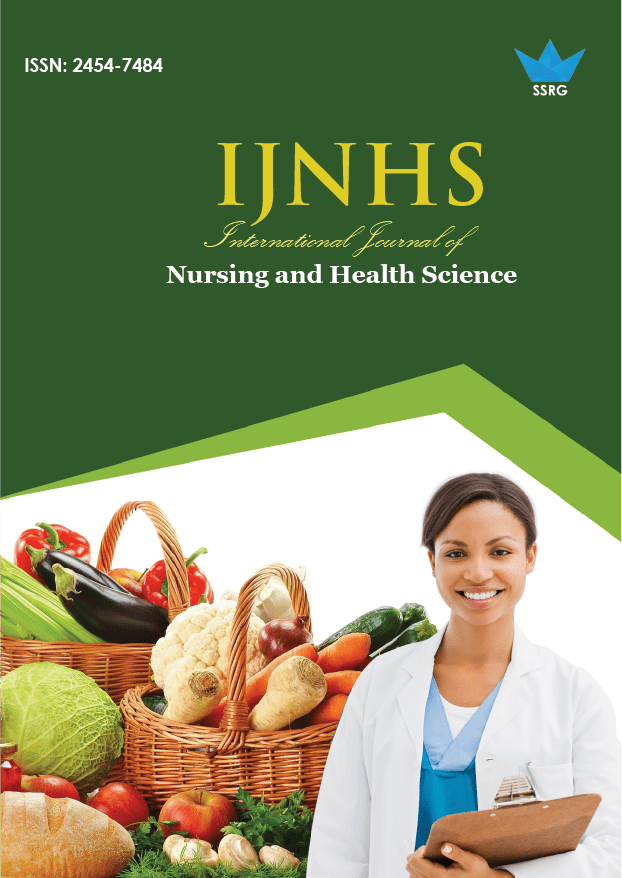Formulation and Evaluation of Herbal Drink Probioticated Using Enterococcus durans Isolated From Curd

| International Journal of Nursing and Health Science |
| © 2021 by SSRG - IJNHS Journal |
| Volume 7 Issue 1 |
| Year of Publication : 2021 |
| Authors : Anita Sundararajan, Shanmugapriya |
How to Cite?
Anita Sundararajan, Shanmugapriya, "Formulation and Evaluation of Herbal Drink Probioticated Using Enterococcus durans Isolated From Curd," SSRG International Journal of Nursing and Health Science, vol. 7, no. 1, pp. 1-6, 2021. Crossref, https://doi.org/10.14445/24547484/IJNHS-V7I1P101
Abstract:
The present study was performed to formulate and evaluate nutritional enriched probiotic herbal beverages using selected herbs. Hemides musindicus (Nannari roots), Ocimum tenuiflorum (Basil), and Aloe vera were selected for study, and it was formulated into herbal juice in three different flavors by incorporating lemon, pineapple, and ginger in the combination of various trials. The best formulation was selected based on Nine points Hedronic scale method. Lactic acid bacteria were isolated from different probiotic sources, and potential bacteria were identified through screening them using a different range of pH, bile, salt, and temperature. Potential strains were molecularly characterized and found to be Enterococcus durans. Hence, using this potential isolate, a probiotic herbal drink was formulated. The formulated drink was subjected to nutritional analysis and antioxidant assay, and it was found to be improved when compared to herbal drinks alone. A significant difference was noticed in antimicrobial activity between probiotic herbal drinks and herbal drinks alone.
Keywords:
Herbal drink, Probiotic bacteria, Enterococcus durans, Nutritional analysis
References:
[1] Garima Mishra, Pradeep Singh, Ramesh Verma, Sunil Kumar, SaurabhSrivastav, K K Jha and R.L Khosa, Traditional uses, phytochemical and pharmacological properties of Moringa oleifera plant; An overview, Der Pharmacia Lettre., 3(2) (2011) 141-164.
[2] S. Rashmi Pal, Yogendra Pal, Nikita Saraswat and PranayWal, A Review on the Recent Flavoring Herbal Medicines of Today, Open Medicine Journal, 7(2020) 1-6.
[3] P.S Begum, G. Madhavi, S. Rajagopal, B. Viswanath, M.A Razak, V. Venkataratnamma, Probiotics as Functional Foods: Potential Effects on Human Health and its Impact on Neurological Diseases, Int J Nutr Pharmacol Neurol Dis, 7 (2017) 23-33.
[4] S.C Sindhu and N. Khetarpaul, Probiotic fermentation of indigenous food mixture: effect on antinutrients and digestibility of starch and protein, Journal of Food Composition and Analysis, 14(2001) 601-609.
[5] M. Saarela, L. Lahteenaki, R. Crittenden, S. Salminen, and M.T.
Sandholm, Gut bacteria and health foods the European perspective. Int. J. of Food Microbiology, 78 (2002) 99-117.
[6] Shah, N. P., Functional foods from probiotics and prebiotics. Food Technology, 55(11) (2001) 46-53.
[7] Gaanapriya, Guhankumar, Sandhiya.N., Kiruthika.V., and Anita, S., Probiotication of fruit juice by Lactobacillus acidophilus, International Journal of Advanced Biotechnological Research,4(1) (2013) 930-940.
[8] H. Harsha and S. Aarti, Quality Evaluation of Herbal Juice Developed from Traditional Indian Medicinal Plants Using Citrus limetta as Base, Journal of nutrition and food science, 5(5)(2015) 1-5.
[9] M.A Amerine, R.M Pangbron, E.A Rossler, Principles of sensory evaluation of food, Acadamic Press, New York, London (1965)
[10] S. Erkkila and E. Petaja, Screening of commercial meat starter cultures at low pH and in the presence of bile salts for potential probiotic use. Meat Sci. 55(2000) 297-300.
[11] D. Haller, H. Cobus, M.G. Ganzle, P. Scherenbacher, C. Bode and W.P. Hammes, Metabolic and functional properties of Lactic acid bacteria in the gastrointestinal ecosystem: A comparative in vitro study between bacteria of intestinal and fermented food origin. Syst. Appl. Microbiol. 24(2001) 218-226.
[12] Hatice Boke, Belma Aslim and A.L.P Gulcin, The role of resistance to bile salts and acid tolerance of xopolysaccharides (Epss) produced by yogurt starter bacteria, Arch. Biol. Sci., Belgrade, 62(2) (2010) 323-328.
[13] A. Gopal, N. P. Shah and H. Roginski, Bile tolerance, taurocholate deconjugation, and cholesterol removal by Lactobacillus and Bifidobacterium spp. Milchwissenschaft 51(1996) 619-62
[14] J.E Hodge and B.T. Hofreiter, Methods in Carbohydrate Chemistry. 17 Edn., Academic Press, New York. (1962)
[15] O.H Lowry, N.J. Rosebrough, A.L. Farr, and R.J. Randall, Protein measurement with the folin phenol reagent. J. Biol. Chem., 193(1951) 265-275.
[16] S Ranganna, Handbook of analysis and quality control for fruit and vegetable products and Ed., TataMc-Graw Hill publishing company Ltd, New Delhi, (1999)
[17] K.P Srinivasakumar and M. Rajashekar, In vitro studies on bactericidal activity and sensitivity pattern of isolated marine microalgae against selective human bacterial pathogens, Indian Journal of Science and Technology, 2(8)(2009) 874-886.
[18] I.P Brito, J.M Campos, T.F.L Souza, C. Wakiyama, and G.A Azevedo, .‘Preparation and comprehensive assessment of homemade cereal bar’, Bull Center Food Process, 22,(2004) 35-50.
[19] M.A Brizuela, P. Serrano, Y. Perez, Studies on Probiotics Properties of Two Lactobacillus Strains, Brazilian Archives of Biology and Technology, 44(1) (2001) 95-99.
[20] N. Yuliana, A. Rangga, and Rakhmiati, Manufacture of fermented coco milk - a drink containing lactic acid bacteria cultures, African Journal of Food Science, 4(9) (2010) 558-562.
[21] Ravi Venkatachalam, KanchanlataTungare, and ThankamaniMarar, Phytochemical screening and in vitro antioxidant activity of Psidiumguajava, Free Radicals, and Antioxidants 2(1) 31.

 10.14445/24547484/IJNHS-V7I1P101
10.14445/24547484/IJNHS-V7I1P101